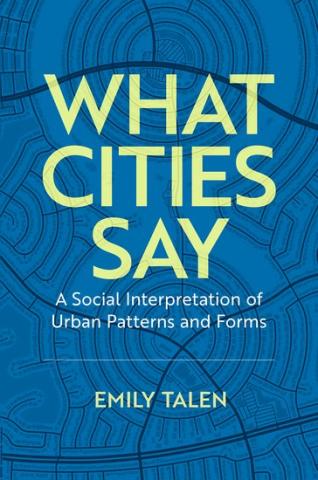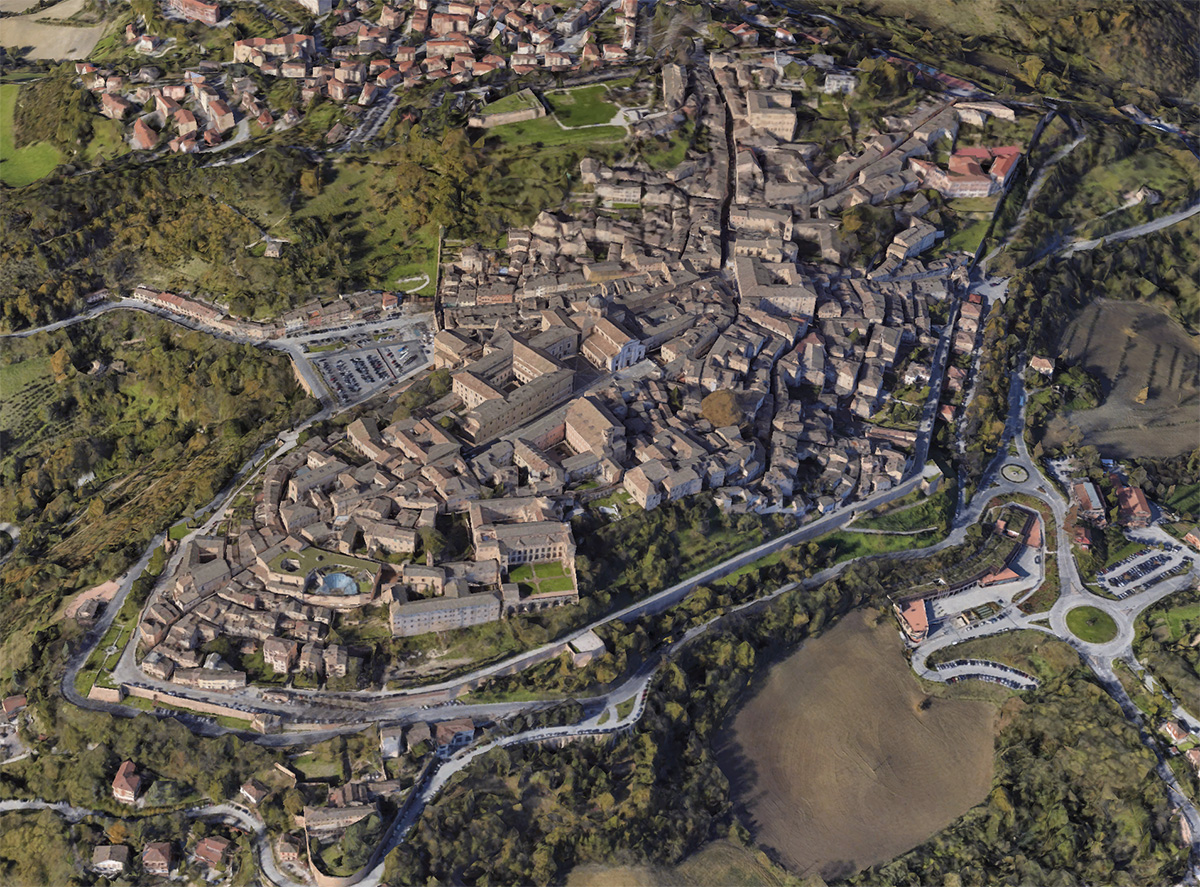A New Book Urges Us to Read Our Cities

The more we can interpret the built environment, says Emily Talen, the better we can advocate for what we want in the future.
By Sarah Steimer
A city is very much a sum of its parts, and a new book by Emily Talen, director of the Urbanism Lab and professor in the Division of the Social Sciences, aims to help people better read those elements. The goal, she says, is to understand our cities’ origins and learn how to then articulate what we want in the future. Talen wrote the text, What Cities Say: A Social Interpretation of Urban Patterns and Forms, as a resource that includes cities from across the globe and throughout history. Over 35 chapters — and often accompanied by images — Talen explores 35 different types of built environments and how they can help us interpret what it says about the people living there.
Talen says the book originated as an effort to create a digestible resource on understanding cities. She had long used materials written by architectural historian Spiro Kostof in her UChicago courses, but these can be dense texts for students to get through. She saw an opportunity to draw from all the interpretations of the built environment she collected over the years to create a single resource that would be simpler for both students and the general public to use. The resulting text explores everything from skyscrapers to plazas to sprawl, offering context to how we might interpret each.
In explaining how one “reads” a city, she gives the example of a docent at an art museum: These individuals can look at a painting and understand what the artist’s style, materials used, and subject matter portrayed tell us about what was happening at the time and what forces were at play. It’s treating a city as a set of artifacts.
“I wanted to transfer that approach to the built environment, to cities,” Talen says. “You can look at something in the city — a boulevard, whatever it may be — and you can start to say things about it: This means that there was a power struggle; this means people were suppressed; this means that there was a lot of money behind it.”
For one example, Talen explains what information you can garner from sprawl. It often means there’s a disinterest in collective living and suggests corporate buying and selling of property without having a connection to a localized place. (She notes that sprawl is not the same as the suburbs, as plenty of suburban neighborhoods are designed thoughtfully for its inhabitants.)
She also underscores that there are numerous ways to interpret city elements. Take the City Beautiful movement in the late 19th and early 20th centuries: The style gave us large gestures of formality and order — think of Daniel Burnham’s parks — and can be seen as designing a framework where collective life can happen. On the other hand, the movement can be interpreted as too top-down and controlling (often by rich white men).
“What Cities Say” also explores concepts like Jane Jacobs’s organized complexity theory, which urges us to consider the emerging order in what otherwise appear to be disorganized systems, such as the informal settlements of refugee camps.
In her own effort to organize the complex reality of city components and design, Talen says there is some overlap between ideas. But the end result is something of an encyclopedia on the concept of reading a city. She says the final product is to be used as a resource to tap, rather than as a text to sit down and read through. Regardless of how her book is digested, she wants people to develop the ability to read a city so that we can design better built environments in the future.
“I want to help people develop this language of interpretation and skill in advocating for what kinds of environments they want, by knowing what to say about them,” Talen says. “It’s knowing how to say, ‘I don't want this street to be that wide.’ Why? ‘Well, here are the scientific reasons about traffic negotiation, but here's how the social context is affected and what it means in the historical context.’
The goal, she says, is to have a broader, more fleshed-out way of describing cities and the built environments that people want moving forward. It’s about articulating the values and priorities for a place and advocating for them, because the built environment says a lot about who the winners and losers were in their making.
As Talen explains it, “Cities don't just build themselves.”
 THE UNIVERSITY OF CHICAGO
THE UNIVERSITY OF CHICAGO




